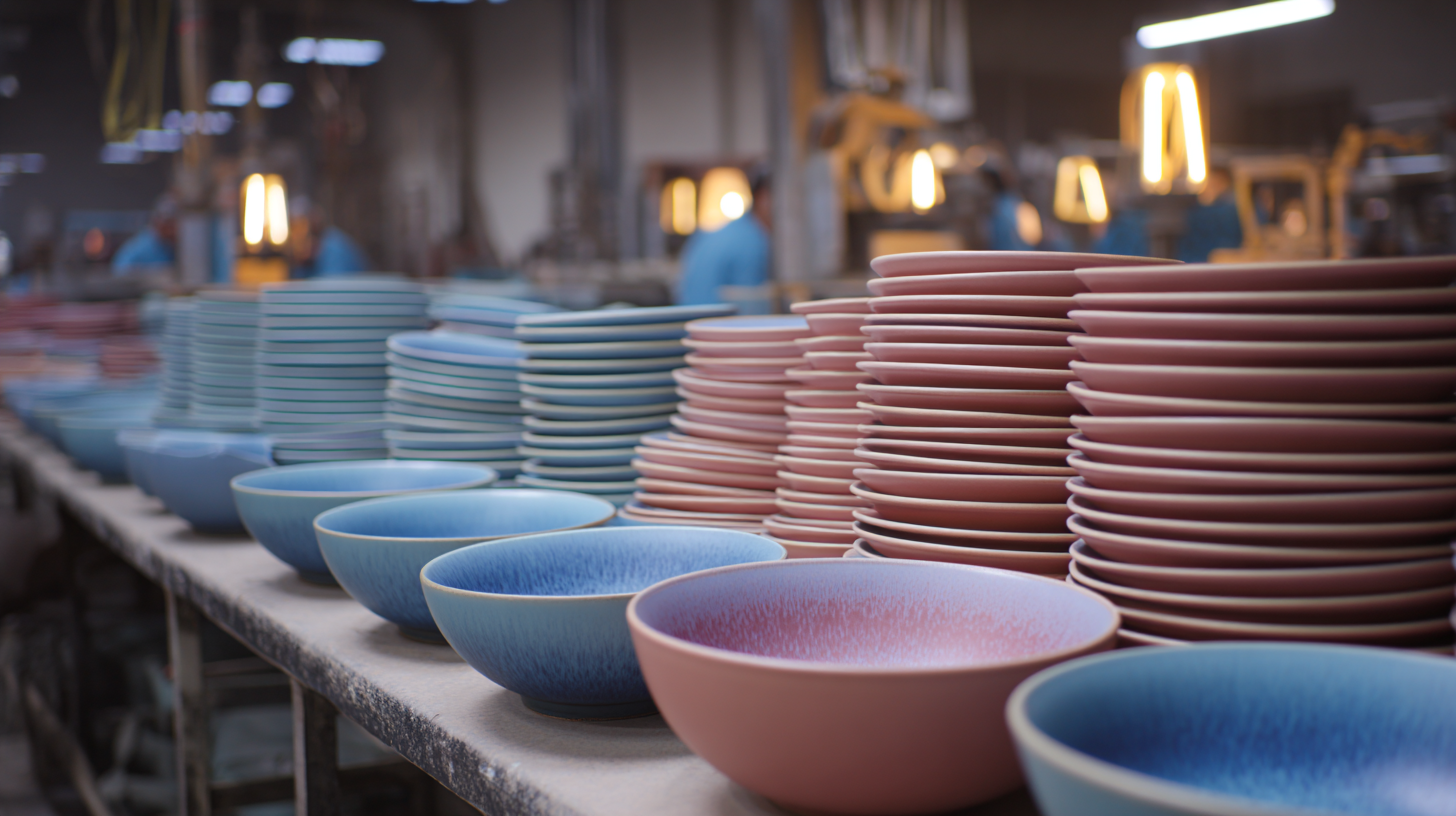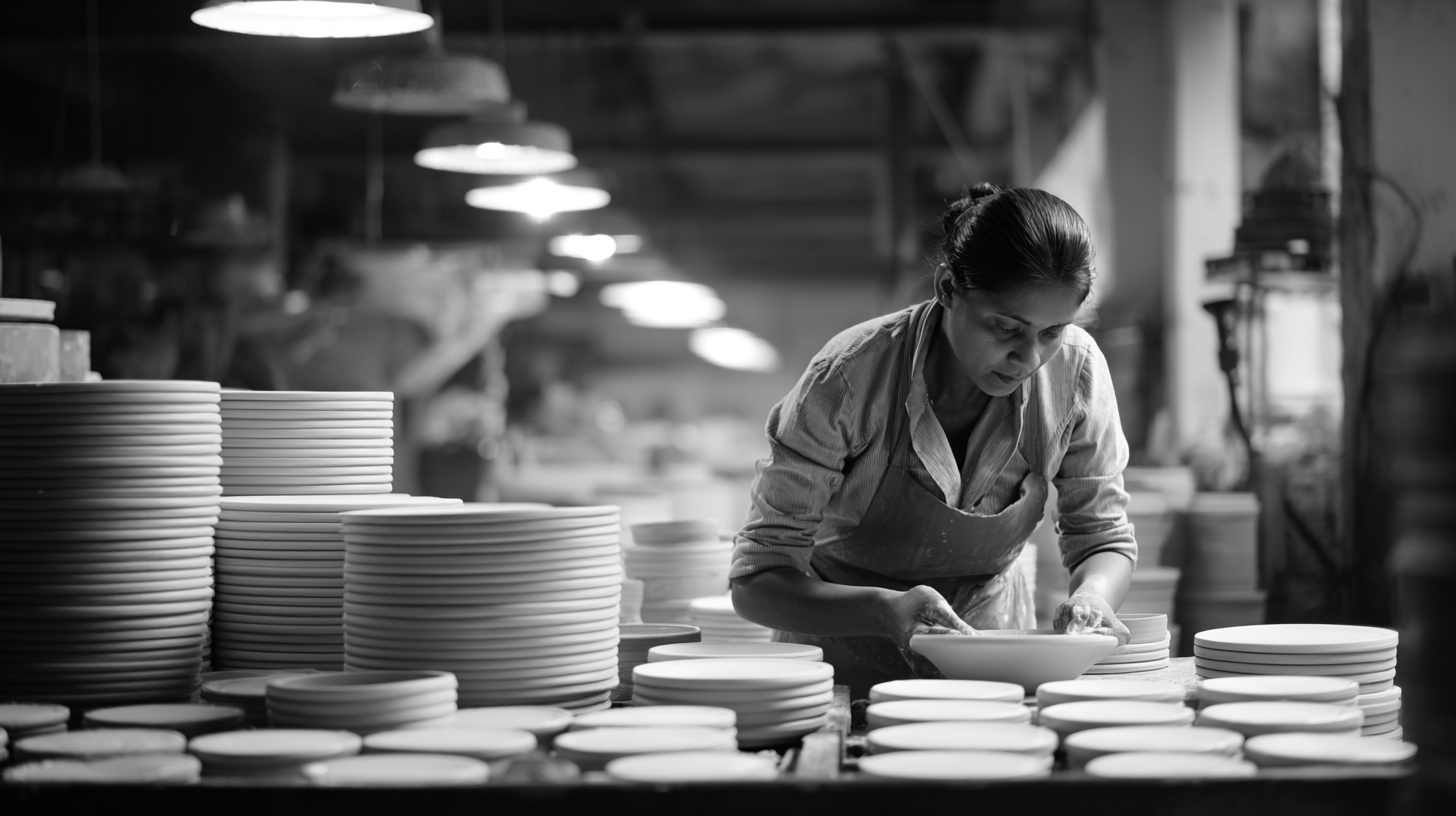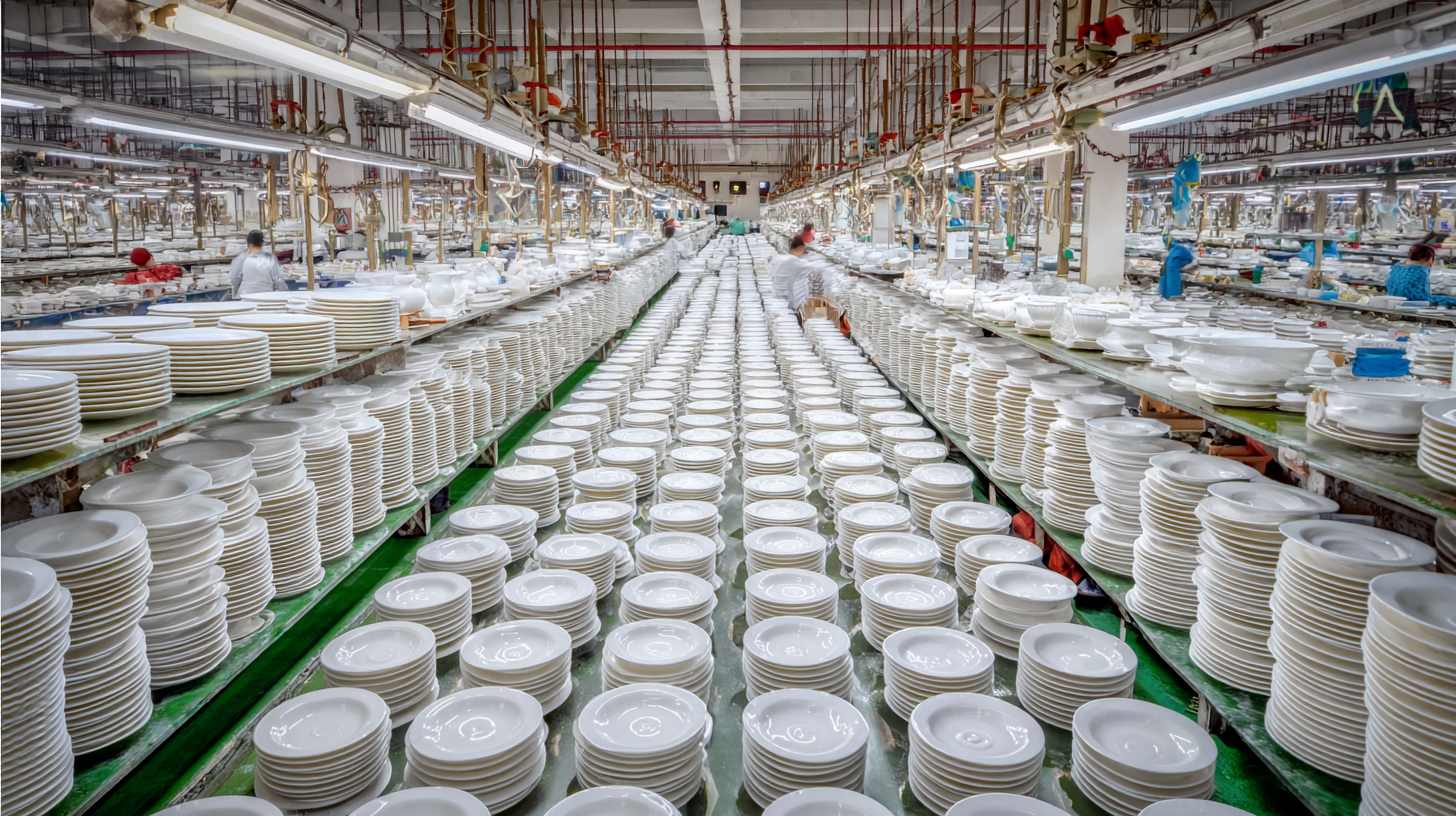As the world increasingly shifts towards sustainability, the manufacturing landscape in China is at the forefront of this revolution, particularly in the production of Sustainable Crockery. Recent reports indicate that the global sustainable dinnerware market is projected to grow significantly, with an expected CAGR of 8.5% from 2021 to 2028, fueled by rising consumer awareness regarding eco-friendly products.

In this context, China's adoption of advanced technologies under the "Industry 2025" initiative is not only enhancing production efficiency but also ensuring that Sustainable Crockery meets stringent environmental standards. With an emphasis on reducing carbon footprints and utilizing renewable materials, Chinese manufacturers are setting benchmarks in sustainable practices that resonate with global market demands, thereby leading the way for superior crockery exports while aligning with the values of a more conscientious consumer base.
The challenges facing sustainable manufacturing in China's crockery industry are multifaceted and significant. According to a report by the China National Building Materials Group, over 70% of the country’s crockery production relies on traditional firing methods, which contribute to high levels of carbon emissions and energy consumption. Transitioning to more sustainable practices, such as utilizing renewable energy sources, is essential but often costly and logistically challenging for local manufacturers.
Additionally, the raw materials used in crockery production present sustainability concerns as well. The extraction of clay and other minerals can lead to environmental degradation if not managed properly. A 2022 industry survey indicated that nearly 60% of the surveyed manufacturers acknowledged insufficient access to sustainably sourced materials, which hinders their ability to shift toward greener practices. To overcome these challenges, collaboration between the government and private sectors is crucial to develop regulations and incentives that promote eco-friendly manufacturing processes, ensuring that China remains competitive in the global sustainable crockery market.
The push for sustainable production practices in the crockery manufacturing industry has gained momentum, with companies in China leading the charge. A significant factor in this movement is the sourcing of raw materials, which plays a crucial role in the overall sustainability of production processes. According to a report by the International Energy Agency (IEA), the ceramics sector is responsible for approximately 5% of global CO2 emissions. This has prompted manufacturers to seek eco-friendly alternatives in raw material sourcing, such as using locally sourced clay to minimize transportation emissions and adopting recycled materials wherever possible.
In 2021, a study by the Environmental Protection Agency (EPA) revealed that companies that prioritized sustainable sourcing practices not only reduced their carbon footprints by up to 30% but also reported a 20% increase in consumer preference for sustainably produced products. This trend is particularly evident in China's crockery exports, where brands that emphasize sustainable practices are increasingly seen as market leaders. As a result, manufacturers are not only enhancing their environmental responsibility but also aligning their operations with consumer demand, ultimately contributing to a transformative shift in the industry that prioritizes both quality and eco-consciousness in production.
In the context of world-class manufacturing, China is positioning itself as a leader in sustainable crockery exports. This manufacturing prowess must navigate a complex landscape where balancing quality and environmental concerns is paramount. Recent studies indicate that the energy trilemma—comprising energy security, environmental sustainability, and economic growth—plays a pivotal role in shaping manufacturing strategies. The pressure to adopt transformative energy developments is not merely an environmental consideration but a determinant of economic vitality, as industries worldwide strive to align with these pressing demands.
Moreover, the agricultural sector is facing similar challenges as it seeks to balance protection measures with health outcomes. Investigating the implications of crop protection laws shows that sustainability must coexist with food security, echoing a broader dilemma present in various sectors, including manufacturing. Companies in the crockery export market can learn from these parallels and implement innovative practices that ensure both high-quality outputs and the responsible use of resources.
**Tips for Manufacturers:**
1. Invest in renewable energy sources to enhance sustainability efforts while reducing operational costs.
2. Develop and implement comprehensive waste management systems to minimize environmental impact without compromising production quality.
3. Engage in market research to understand consumer preferences for sustainability, ensuring that products meet both ethical and quality standards.

In recent years, the ceramics industry in China has made remarkable strides in sustainable practices, particularly in waste management. According to a report from the Global Alliance for Sustainable Waste Management, approximately 30% of waste generated in manufacturing processes in the ceramics sector can be effectively recycled through innovative approaches. This shift not only reduces landfill contributions but also promotes the reuse of materials, transforming what was once considered waste into valuable resources for new product lines.

Chinese manufacturers are pioneering in the implementation of advanced technologies aimed at overcoming production challenges. A notable instance is the integration of closed-loop systems in production lines that minimize resource consumption. Research from the China Building Materials Federation indicates that these systems can reduce raw material usage by up to 20% while improving overall efficiency. As a result, companies can navigate stringent international regulations on sustainability without compromising their output quality, making them leaders in sustainable crockery exports on a global scale. The combination of innovative waste management practices and cutting-edge production techniques positions China as a benchmark for other nations aiming to enhance their sustainability frameworks in manufacturing.
As the demand for sustainable products continues to rise, consumer awareness plays a crucial role in shaping the market for sustainable crockery exports from China. Today’s consumers are more informed than ever, actively seeking products that not only meet their functional needs but also align with their values concerning environmental stewardship. This heightened awareness drives manufacturers to adopt sustainable practices, ensuring that their production processes minimize waste and reduce the carbon footprint.
In China, the shift towards world-class manufacturing encompasses a commitment to sustainability that resonates with global consumers. Companies are investing in eco-friendly materials and innovative technologies, reshaping their approach to production. This transformation is not merely a response to regulatory pressures; rather, it is a proactive strategy that enhances brand credibility and fosters customer loyalty. By prioritizing sustainable practices, these manufacturers are not only meeting consumer expectations but also setting benchmarks for the industry, thus leading the way for increased exports of sustainable crockery on the world stage.
